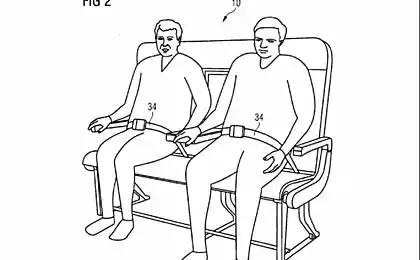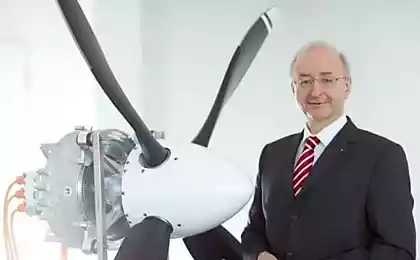484
Electroanalyt eConcept for regular airlines

Airbus is developing a passenger plane eConcept up to 80 passengers, driven by an electrical actuator. At the moment already built a small electroanalyt, which acts as a test lab.
Until that time, have already been created airplanes electric for small aircraft, such as single Elektra One Solar and Antares, and double E-Fan from Airbus. However, the European aeronautic defence and space company (EADS) is planning to go further and create aircraft with electric drive, which will be used in regular flights.
Technical Director of Airbus Group reports that aircraft with capacity for up to 80 people is planned to be used on flights lasting up to 3 hours. So the aircraft best suited to regional lines. The essential advantage of elektrozapalom is a low noise, thus the ability to perform takeoffs and landings, even at night.
For propulsion will be used 6 motors with the impellers — propellers, which are enclosed in the shell. The usual turbine is not used to create thrust, and to generate electricity and recharge the batteries. For charging also partially meet the 6 motors that are able to become generators of electrical energy. As batteries are used, lithium-polymer and lithium-air or lithium-sulfur batteries.

The engines will be integrated into the structure of the aircraft, while in most modern aircraft they are on brackets under the wings. By integrating the engines are smaller, however, it will have to increase their number to six, to create the required traction.
One of the key moments in the creation of this aircraft is to save weight. For example, conventional copper cables will be replaced by superconductors. There is a big potential for weight savings. Thirty-degree cable with copper cables that are designed for the current of 4500 A, weighs 12 pounds, and the superconductor of the same length of MgB2 (Magnesium diboride) weighs only 16 grams. But keep in mind that superconductors work only at extremely low temperatures and must be pre-cooled using a cryogenic installation to -247 degrees Celsius.
At the start and climb like the plane will need a lot of energy to be obtained from a fully charged battery. However, at full speed and turns on a conventional turbine, which charges the batteries. The mode of operation of the turbine is reduced when the aircraft is gaining desired height and a speed of about 880 km/h.
While reducing the aircraft first disabled the turbine. Then the plane goes into planning mode — in this time, the electric motors switch to generators. RAM air to spin the blades of the engines, which produce electricity. In the end when landing, the battery is almost fully charged, there is a sufficient supply of electricity. Before boarding for security purposes, and also runs a conventional turbine to generate electricity operational in case of an emergency.
Commissioning of the new aircraft eConcept is unlikely to be implemented in the near future. While the Munich conference was presented only a prototype of the actuator. The system itself will be ready in a couple of years, and the first prototype aircraft is expected not earlier than in ten years. Using eConcept Airbus plans to enter the market of regional planes. At the moment the small plane A-series А318 accommodates about 100 passengers, but the aircraft of this type do not sell well.
With a passenger capacity of 70-80 passengers Airbus plans to compete with companies such as Embraer with their E-Jet and Bombardier with the CRJ family of aircraft. The sale of these aircraft is quite successful in the European market, they are used by many airlines for regional flights, especially in small airports. Together with some Fokker-70/100 and Avroliner they fill in Europe, the gap between propeller aircraft, which need a very short runway and large capacity aircraft such as the Airbus 320 family or the Boeing 737.
Source: alternativenergy.ru
Incredible inventions that amaze with their creativity
American scientists discovered water on the moon























